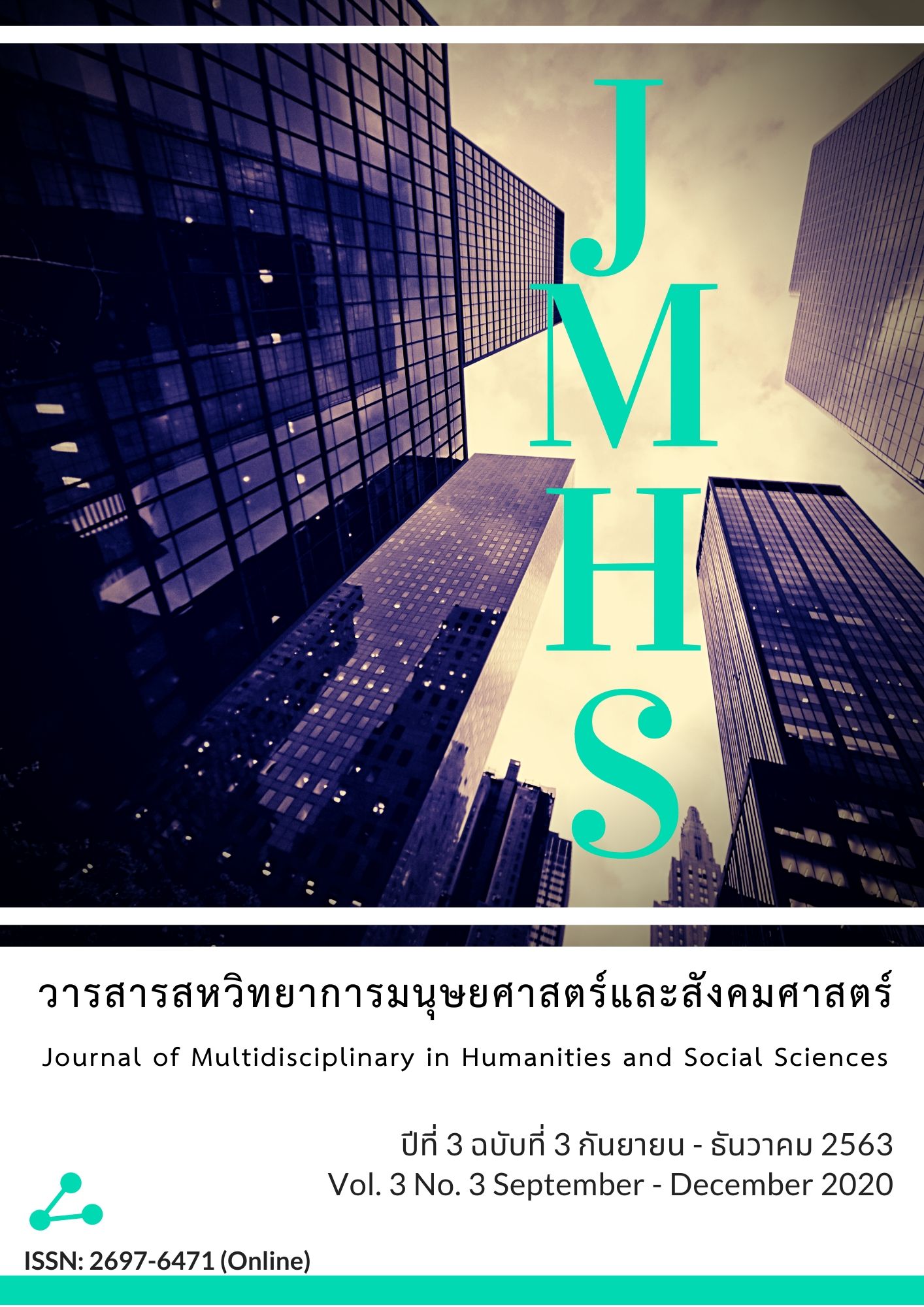Social Entrepreneurs with Competitive ability Focus on Creative Products for Tourism in Phetchabun Province
Main Article Content
Abstract
The research aimed to study the characteristics of the social entrepreneurs in Phetchabun Province. The study was a qualitative research with an in-depth interview. A sample was selected from 9 social entrepreneurs. The results showed that the characteristics of the social entrepreneur included 1) being loved by people in the organization and other people, 2) having the creativity, 3) being trustworthy, and 4) being like a family of people in the organization and others. In addition, the result showed that the competitiveness of the social enterprise consisted of 1) the potential for growth and revenue generation in a niche market, 2) a good response to a specific market segment, 3) strategies that make the organization continuously innovate, 4) strategies that make the organization grow continuously when compared to competitors, 5) responding to customer needs more than what customers expect, 6) strategies that result in performance gains over rivals and solutions to social and environmental issues, and 7) continuously innovative services to the market.
Article Details
Views and opinions appearing in the Journal it is the responsibility of the author of the article, and does not constitute the view and responsibility of the editorial team.
References
เกวลิน มะลิ. (2557). กิจการเพื่อสังคมในประเทศไทย. วารสารเศรษฐศาสตร์และกลยุทธ์การจัดการ, 1(2), 104-112.
ศิวฤทธิ์ พงศกรรังศิลป์ และสุชาติ ฉันสำราญ. (2558). ศักยภาพทางการตลาดของอุตสาหกรรมการท่องเที่ยวในภาคใต้ในมุมมองนักท่องเที่ยวต่างชาติ. Veridian E-Journal, Silpakorn University, 8(2), 556-570.
ศักดิ์ดา ศิริภัทรโสภณ. (2558). การศึกษากรอบแนวคิดเพื่อการพัฒนาวิสาหกิจเพื่อสังคมในประเทศไทย. วารสารสมาคมนักวิจัย, 20(2), 30-46.
ส.ศิริชัย นาคอุดม และรุ่งรวี จิตภักดี. (2561). ความสามารถในการแข่งขันของกิจการเพื่อสังคมของประเทศไทย. วารสารบริหารธุรกิจ เศรษฐศาสตร์และการสื่อสาร, 13(2), 111-120.
เอกชัย นิตยาเกษตรวัฒน์. (2553). โครงการวิจัยเรื่อง การพัฒนากิจการเพื่อสังคม: กรณีศึกษาที่ประสบความสำเร็จในต่างประเทศ และการประยุกต์ใช้ในประเทศไทย, วารสารบริหารธุรกิจนิด้า, 6(8), 1-29.
Barney, J. B. (1991). Firm resources and sustained competitive advantage. Journal of Management, 17, 99–120.
Barney, J. B. (1995). Looking inside for competitive advantage. Academy of Management Executive, 9(4), 49–61.
Distanont, A., Khongmalai, O., & Distanont, S. (2019). Innovations in a social enterprise in Thailand. Kasetsart Journal-Social Sciences, 40(2), 411-419.
Elkington, J. (1998). Partnerships from cannibals with forks: The triple bottom line of 21st‐century business. Environmental quality management, 8(1), 37-51.
Grant, R. (1991). The resource-based theory of competitive advantage: implications for strategy formulation. California Management Review, 33, 114-35.
Ling-Yee, L., & Ogunmokun, G. O. (2001). The influence of interfirm relational capabilities on export advantage and performance: an empirical analysis. International Business Review, 10(4), 399-420.

